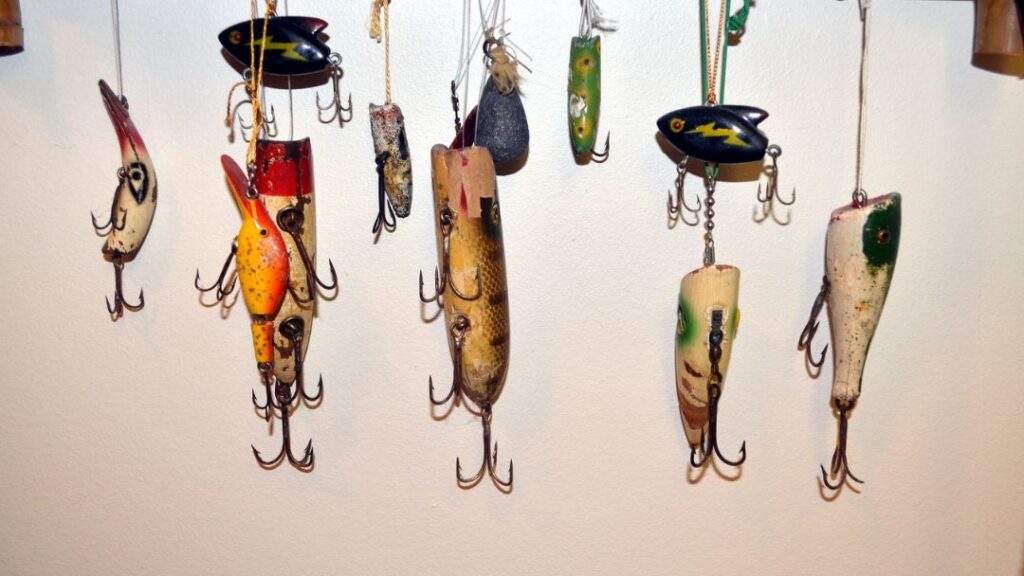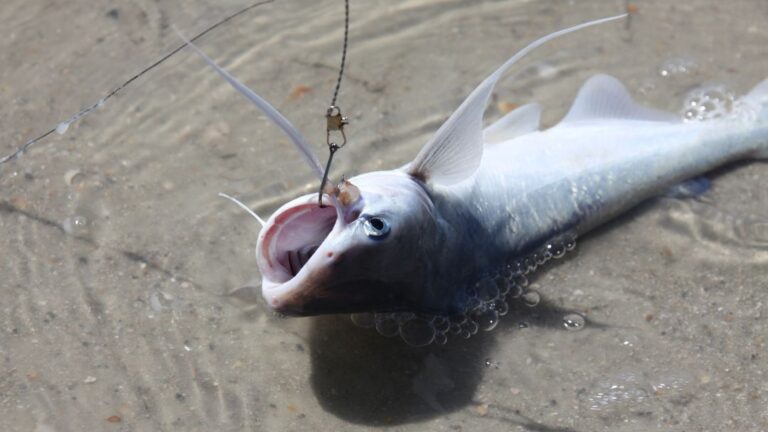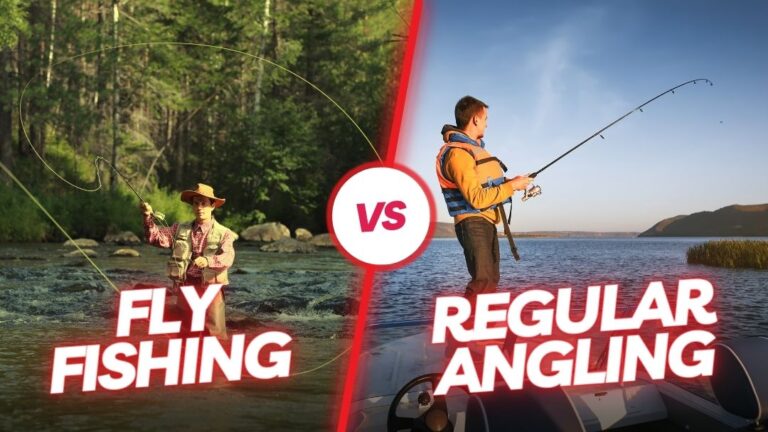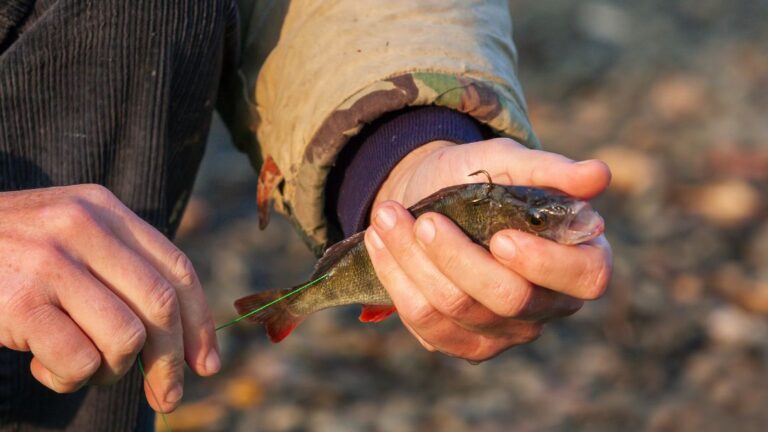What Saltwater Lures & Baits to Get: Saltwater Fishing.
For saltwater fishing, some popular lures and baits to consider are topwater plugs, soft plastic swimbaits, and live bait such as shrimp or mullet. These options can entice a variety of saltwater species, such as redfish, snook, and speckled trout.
Other effective choices include spoons, jigs, and jerk baits, which can mimic the movements of injured baitfish to attract predatory fish. Whether you’re casting from shore or boat, having a diverse selection of lures and baits can increase your chances of success in saltwater fishing.
So, make sure to pack these options in your tackle box for your next saltwater excursion.
Understanding The Saltwater Fishing Environment
Before deciding which saltwater lures and baits to get for your fishing adventure, it’s important to have a solid understanding of the saltwater fishing environment.
Different factors such as the location, the depth and temperature of the water, and the target fish species play crucial roles in determining the success of your fishing excursion.
Differentiating Between Inshore And Offshore Fishing
Inshore fishing refers to fishing in waters close to the shore, typically within a few miles. These areas include beaches, piers, jetties, estuaries, and other coastal environments. Inshore fishing is known for its diverse and abundant fish species, including redfish, snook, trout, and flounder. The water depth in inshore areas is relatively shallow, typically ranging from several inches to a few feet.
Offshore fishing, on the other hand, takes place farther out to sea, in deeper waters. It involves venturing beyond the sight of land to pursue larger and more pelagic species such as tuna, marlin, sailfish, and mahi-mahi. Offshore fishing requires specialized gear, including larger boats, deep-diving lures, and heavy-duty tackles, due to the greater depths and stronger currents encountered.
Considering The Depth And Temperature Of The Water
When selecting lures and baits, it’s essential to consider the depth and temperature of the water you’ll be fishing in. Different fish species inhabit varying depths and prefer specific temperature ranges.
For example, certain species like snapper and grouper are commonly found near reefs and rocky structures in relatively deeper waters, while others like striped bass and bluefish thrive in shallower depths near coastlines.
Temperature also plays a crucial role, as fish are cold-blooded creatures and their activity levels are influenced by the water temperature. Some species are more active in warmer waters, while others prefer cooler temperatures.
Identifying The Target Fish Species
Identifying the target fish species is key to determining the appropriate lures and baits to use. Different species have different feeding habits, preferences, and vulnerabilities. Research your target species in advance to acquire knowledge about their preferred prey, size, and behavior.
This understanding will help you select the most enticing lures that mimic the fish’s natural prey. For example, if you’re targeting snook, you may want to include lures such as crankbaits and soft plastic jigs in your fishing arsenal, as these mimic the small baitfish that snook commonly feed on.
By understanding the saltwater fishing environment, differentiating between inshore and offshore fishing, considering the depth and temperature of the water, and identifying the target fish species, you’ll be equipped to make informed decisions when selecting saltwater lures and baits. So, embark on your fishing expedition with confidence, and may your hooks be filled with big catches!

Top Saltwater Lures For Inshore Fishing
Inshore fishing is a thrilling and popular activity that requires the right tools to be successful. When it comes to saltwater lure fishing, artificial baits are a go-to choice for many anglers. Among the various types of artificial baits available, soft plastic baits, jigs, and swimbaits stand out for their versatility and effectiveness.
Soft plastic baits are a staple in any saltwater angler’s arsenal. They come in a wide range of shapes, sizes, and colors, allowing you to imitate the natural prey of the fish you’re targeting. Soft plastics can be rigged with different hooks, weights, or jig heads, giving you the ability to fish at various depths and techniques.
Jigs are another fantastic saltwater lure option. Their weighted heads and skirts create an enticing motion that can attract the attention of nearby fish. Jigs are particularly effective when fishing near the bottom or in areas with structure, such as docks or rock formations. Varying the retrieve speed and adding occasional twitches can make the jig look like an injured baitfish, triggering predatory instincts in the fish.
Swimbaits are a popular choice among anglers targeting larger saltwater game fish. These lures are designed to mimic the appearance and swimming motion of real fish. With their lifelike details and realistic swimming action, swimbaits can be irresistible to predatory fish. They are available in various sizes to match the natural prey in the area you are fishing.
When fishing in shallow water, topwater lures can be incredibly effective in enticing fish and creating heart-pumping strikes. These lures are designed to imitate wounded baitfish or create a commotion on the water’s surface, attracting predatory fish lurking below.
Topwater lures come in various shapes and sizes, including poppers, stick baits, and buzz baits. Poppers create a popping sound when twitched, resembling a distressed baitfish. Stickbaits, also known as walk-the-dog lures, create a zigzag motion when retrieved, imitating a struggling fish. Buzzbaits features a spinning propeller or blade that churns the water’s surface, creating vibrations and ripples that grab the attention of nearby fish.
When using topwater lures in shallow water, it’s important to cast near structures such as vegetation, submerged rocks, or points of land. These areas are often prime locations where fish seek shelter or ambush their prey. With the right presentation and retrieval technique, topwater lures can entice explosive strikes and provide an exhilarating fishing experience.
In addition to artificial baits, natural baits have their own benefits when it comes to inshore fishing. While they may require more preparation and care, using natural baits can yield impressive results.
Live shrimp, for example, is a popular natural bait that attracts a wide variety of saltwater game fish. Shrimp emits natural scents and movements that trigger a feeding response in predatory fish. By presenting live shrimp on a hook or using a Carolina rig, you can entice fish into biting.
Other natural baits, such as mullet, pilchards, or sand fleas, can also be effective for inshore fishing. These baits are readily available in certain areas or can be caught with the right equipment. Their natural scent and appearance make them irresistible to many saltwater species.
When selecting natural baits, consider the target species, local regulations, and availability. It’s essential to handle the baits properly to maintain their freshness and effectiveness on the water. By leveraging the power of natural baits, you increase your chances of hooking into some impressive catches during your inshore fishing adventures.
Essential Saltwater Lures For Offshore Fishing
When it comes to offshore fishing, having the right lures can greatly increase your chances of landing a big catch. Saltwater lures are designed to mimic the movement and appearance of natural prey, fooling even the most cunning fish.
Exploring The Use Of Trolling Lures For Offshore Fishing
Trolling lures are a popular choice among offshore anglers for their ability to cover a large area and attract a variety of fish species. These lures are designed to be pulled behind a moving boat, imitating the movement of a swimming fish.
They come in a wide range of shapes and sizes, each with its own unique action and diving depth. Trolling lures often feature vibrant colors and UV-resistant finishes to grab the attention of fish, even in deep waters.
Some common types of trolling lures include:
- Surface Poppers – These lures are designed to create a commotion on the water’s surface, mimicking the splash and noise of fleeing baitfish. They are particularly effective in attracting topwater predators like tuna, mahi-mahi, and wahoo.
- Soft Plastic Trolling Baits – These lures come in a variety of shapes and sizes and often feature lifelike details such as scales and eyes. They can be rigged with or without a jighead and are excellent for targeting species like marlin, sailfish, and kingfish.
- Feathered Trolling Tuna Lures – These lures typically consist of a colorful, skirted hook combined with multiple feathers or flashy mylar material. The combination of movement and color makes them irresistible to tuna, as well as other pelagic species.
Highlighting The Effectiveness Of Deep Diving Plugs And Crankbaits
Deep diving plugs and crankbaits are essential lures for targeting offshore species that prefer to occupy deeper waters. These lures are designed to dive down quickly and reach depths that other lures cannot reach. They often feature a diving lip or a weighted body that helps them achieve their desired depth.
The realistic swimming action of deep diving plugs and crankbaits, paired with their ability to hug the bottom, make them incredibly enticing to fish. Some popular choices among offshore anglers include:
- Swimming Plugs – These lures imitate the movements of injured baitfish, which can trigger predatory instincts in fish. They are excellent for targeting species such as grouper, snapper, and amberjack.
- Lipped Crankbaits – These lures have a built-in bill or lip that causes them to dive and wobble as they are retrieved. This action makes them irresistible to species like barracuda, king mackerel, and yellowfin tuna.
- Vertical Jigging Plugs – These lures are specifically designed for vertical jigging, a technique where the angler drops the lure down and jerks it upward to simulate an injured or fleeing baitfish. Vertical jigging plugs are highly effective for species like amberjack, grouper, and tuna.
Discussing The Benefits Of Using Flashy Metal Jigs And Bucktail Jigs
Metal jigs and bucktail jigs are versatile lures that can be used in a variety of fishing situations. These lures mimic the shiny, erratic movements of baitfish, attracting the attention of predatory fish species.
Metal jigs are typically made from durable materials like stainless steel or lead, while bucktail jigs consist of a lead head and a skirt made from deer hair.
Here are some benefits of using flashy metal jigs and bucktail jigs:
- Long Casting Distance – Metal jigs and bucktail jigs are aerodynamic, allowing them to be cast far distances, reaching areas where fish may be feeding.
- Versatility in Retrieve – These lures can be retrieved at different speeds and depths, allowing anglers to adapt to the feeding preferences of various fish species.
- Durability – Metal jigs and bucktail jigs are designed to withstand the rigors of saltwater environments, making them a reliable choice for offshore fishing.
Whether casting or vertical jigging, metal jigs and bucktail jigs have proven to be highly effective for targeting offshore species such as striped bass, bluefish, and Spanish mackerel.
The Art Of Matching Lures To Saltwater Fish Species
Matching the right lures to specific saltwater fish species is a true art form, requiring an understanding of fish behaviors and the ability to make smart choices in color, size, and shape.
By selecting the right lures, anglers can greatly improve their chances of hooking a catch.
Understanding How Fish Behaviors Influence Lure Choice
Before delving into the different types of lures available, it is important to understand how fish behaviors play a vital role in lure selection.
Different fish species exhibit unique feeding behaviors, which can vary depending on factors such as water temperature, time of day, and available forage. Some fish are known to be more aggressive predators, while others are more cautious and selective in their feeding habits.
When choosing a lure, it is crucial to consider the fish’s feeding patterns. For example, if you are targeting aggressive predatory fish, such as striped bass or tuna, you may opt for lures that mimic fast-moving baitfish or have a realistic swimming action.
On the other hand, if you are targeting more cautious species like snook or redfish, you might choose lures that imitate slow-moving or injured prey.
Discussing The Importance Of Color, Size, And Shape In Lure Selection
Color, size, and shape are three key factors to consider when selecting a lure for saltwater fishing. Fish have different visual capabilities, and their preference for certain colors can vary based on water clarity and environmental conditions.
While it can be challenging to determine the perfect color for a specific fish species, certain color patterns tend to be more effective in different situations. For example, brighter colors like chartreuse and pink can attract fish in murky water, while more natural colors like silver and green may work best in clear water.
Size is another critical aspect to consider when choosing a lure. Matching the size of your lure to the forage in the area can significantly increase your chances of getting a bite. If there are small baitfish present, using a smaller-sized lure can be a great tactic to mimic their appearance. Conversely, when targeting larger predatory fish, selecting a larger-sized lure can entice them into striking.
The shape of the lure also plays a role in its effectiveness. Lures come in various shapes, from slim and streamlined to bulky and bulky. Determining the ideal shape depends on the fish species you are targeting and their feeding habits.
For example, fish with a more elongated body shape, like marlin, may be attracted to lures with a slender profile, resembling the shape of a baitfish. On the other hand, species like grouper or snapper may be enticed by lures with a bulkier shape that mimics crustaceans or other bottom-dwelling prey.
Highlighting The Specific Lures For Popular Saltwater Fish Species
Now that we’ve covered how fish behaviors and lure characteristics influence each other, let’s explore some specific lures that are known to be effective for popular saltwater fish species. Table 1 displays a list of popular saltwater fish species and the corresponding lures that have been proven successful in catching them.
| Fish Species | Recommended Lures |
|---|---|
| Striped Bass | Topwater plugs, soft plastic swimbaits, bucktail jigs |
| Redfish | Gold spoons, soft plastic shrimp imitations, crankbaits |
| Snook | Jerkbaits, soft plastic jerk shads, live bait (pilchards, pinfish) |
These are just a few examples, but there are countless other lures available to target various saltwater species. It is essential to research and understand the preferences of your target species before hitting the water, as different lures excel in different situations.
By matching your lure selection with the specific fish species you are targeting, you can significantly increase your chances of success.
Expert Techniques For Using Saltwater Lures And Baits
When it comes to saltwater fishing, using the right lures and baits can make all the difference in your success. But it doesn’t stop there. Knowing how to effectively use these lures and baits is equally important.
Exploring Various Retrieval Techniques For Different Lure Types
Each saltwater lure type requires its own unique retrieval technique to effectively attract fish. Let’s take a look at some popular lure types and the retrieval techniques that work best for them:
- Topwater lures: These lures create surface disturbances that mimic the movements of injured baitfish. For topwater lures, a slow and steady retrieval with occasional pauses can entice predatory fish to strike.
- Jerkbaits: Jerkbaits imitate injured baitfish that dart and pause in the water. To make the most of these lures, use short, sharp twitches followed by brief pauses to trigger strikes from fish.
- Soft plastic baits: Soft plastic baits offer versatility and can be used with different retrieval techniques. One effective approach is to use a slow, steady retrieve with occasional twitches to add a lifelike action.
- Jigs: Jigs are versatile lures that can be retrieved in a variety of ways. Experiment with techniques like hopping, dragging, and swimming to find the presentation that works best for the fish you’re targeting.
Discussing The Influence Of Speed And Action On Lure Success
The speed and action of your lure play a crucial role in determining its success in attracting fish. Here are some key factors to consider:
- Matching the hatch: Observe the baitfish in the area and try to mimic their speed and action. Fish are more likely to strike a lure that closely resembles their natural prey.
- Experiment with different speeds: Some fish may prefer a fast-moving target, while others may be more enticed by a slow and subtle presentation. Vary your retrieval speed until you find what triggers the most bites.
- Add action to your lures: Incorporating action into your lure presentation can make it more enticing to fish. Try imparting subtle movements, like twitches or pauses, to mimic injured or fleeing prey.
Highlighting Advanced Techniques For Jigging And Popping
Jigging and popping are specialized techniques that require specific tools and skills. Here’s what you need to know:
- Jigging: Jigging involves vertically dropping and lifting a weighted lure to imitate a wounded baitfish. Vary the speed and depth of your jigging motion to entice strikes from different fish species.
- Popping: Popping involves creating a popping sound on the water’s surface to attract fish. To achieve this, use a popping cork or a topwater lure and make short, sharp pops with your rod to imitate prey movement.
- Adapt to conditions: Adjust your jigging and popping techniques based on the fishing conditions, such as water depth, current speed, and the behavior of the fish you’re targeting.
Mastering expert techniques can take time and practice, but the results are well worth the effort. By understanding and implementing these retrieval techniques, considering speed and action, and utilizing advanced jigging and popping techniques, you’ll increase your chances of landing that trophy saltwater catch.
Experiment, learn from experience, and continue to refine your skills to become a truly accomplished saltwater angler.
Conclusion
In closing, choosing the right saltwater lures and baits can greatly enhance your fishing experience. With a wide array of options available, it’s important to consider the target species, water conditions, and personal preferences.
Whether you opt for spoons, soft plastics, or live baits, be sure to experiment and adapt your approach as needed.
Taking the time to research and invest in quality lures and baits will greatly increase your chances of success on your next saltwater fishing trip.






